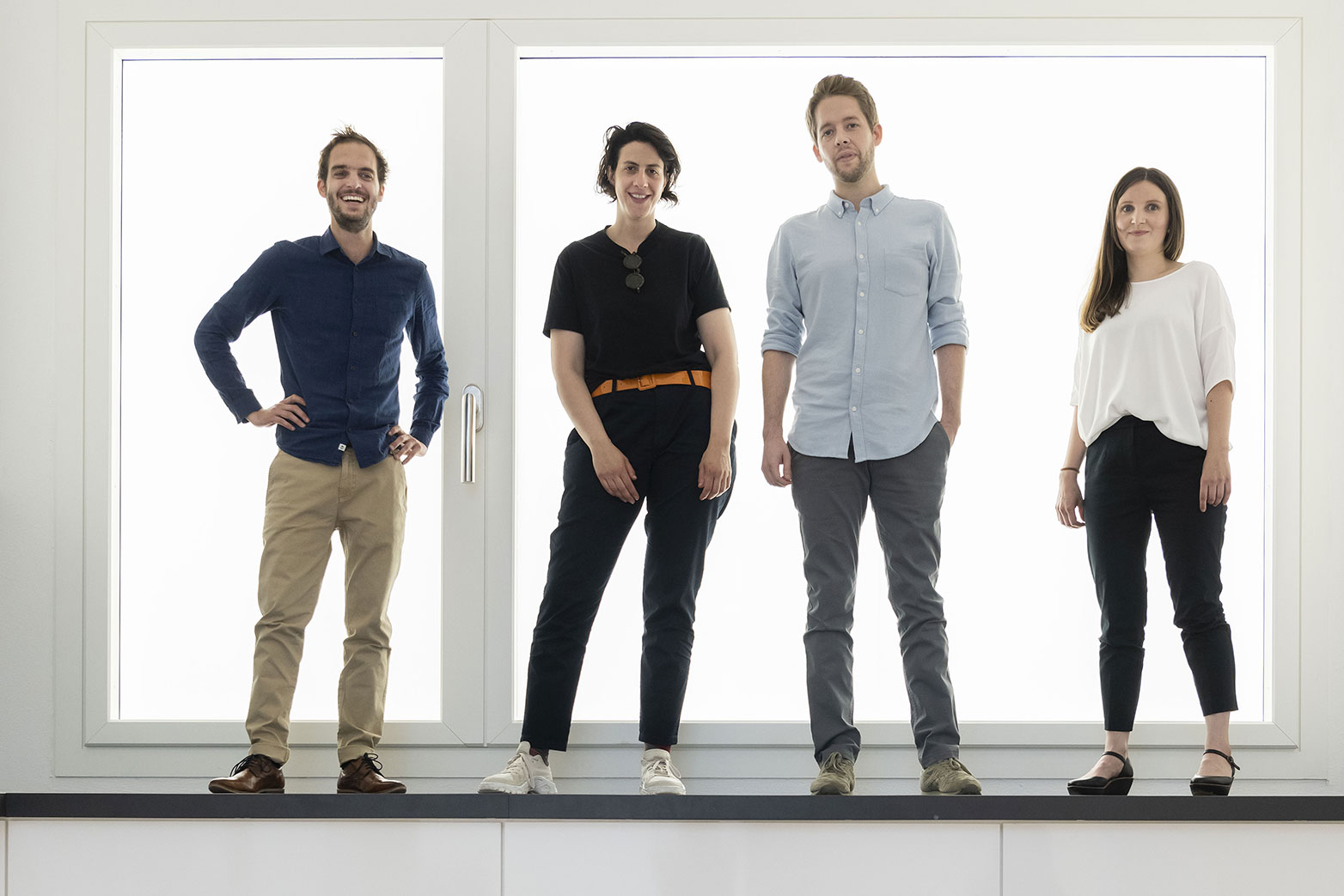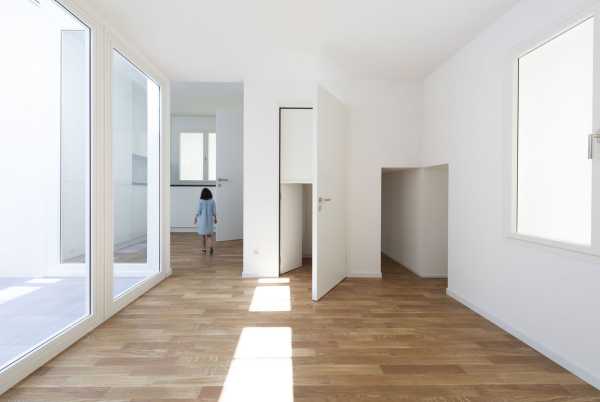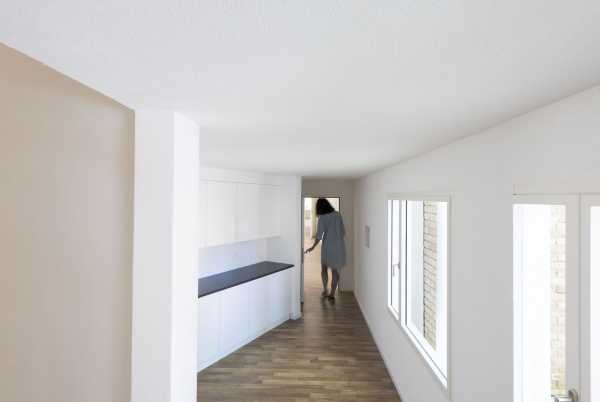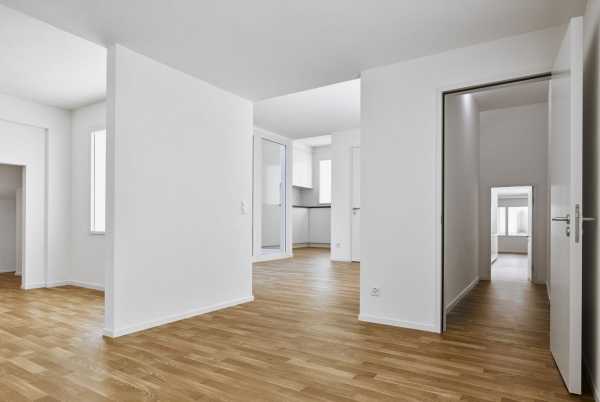Architecture’s blind spot
The 16th International Architecture Exhibition (Biennale) in Venice gets underway on Saturday. A number of architects associated with ETH submitted contributions to the Biennale, including the four next-generation academics who designed the Swiss pavilion. Alessandro Bosshard and Matthew van der Ploeg offer insights into their project ‘Svizzera 240: House Tour’.

Shortly after the publication of this article, the Swiss Pavilion received the Golden Lion for the first time. Further information can be found in the article "Biennale 2018: ETH contribution wins Golden Lion".
What can visitors expect from the Swiss pavilion?
Alessandro Bosshard: A tour of unfurnished rooms. On the one hand, the setting will strike visitors as familiar, because it resembles a classic apartment. But at the same time it will be confusing, since we have done away with the usual scale in the dimensions. So there is a kitchen that is too large, and doors that are too small or distorted. By transforming the original materials into something alien, we want to sharpen people’s perception of the things that surround them.
Matthew van der Ploeg: The view of the interior space in which we live is more or less a blind spot in architecture. That’s because architects are preoccupied primarily with plans, while occupants soon think about furnishing. We think it’s exciting to make the space the focal point for a change.
The theme of the Biennale this year is ‘Freespace’. How do you interpret that, and how does your project pick up on the theme?
Van der Ploeg: For us, ‘Freespace’ has a lot to do with generosity. In our house tour, we operate at a number of different levels. For a start, we leave the space literally free so that visitors can experience it in a different and more intense way. And we have exercised the freedom to look at the living space from another viewpoint than our usual architect’s perspective. That means starting with the appearance rather than working with plans and dimensions. So we studied images of unfurnished apartments on the websites of Swiss architectural firms.
What do you want to achieve with your contribution?
Bosshard: We believe that contemporary residential construction is heavily standardised – white plaster walls, skirting boards, largely standardised windows and door fittings. The ubiquity of these elements means we take them for granted, more or less. We want to make people conscious of them.
Van der Ploeg: We want to inspire everyone – both architects and lay people – to think about the way we live. Our installation serves as a kind of mirror. It enters into a dialogue with the visitor and hopefully triggers discussion, even critical discussion.
Is your theme typically Swiss?
Bosshard: Switzerland is a nation of renters; it’s one of the European countries with the highest proportion of people living in rented accommodation. Many people live in numerous different apartments over the course of their lives. Living space is an ongoing issue for us. As it happens, the number 240 in our title relates to the average room height in centimetres of Swiss apartments.
Your concept beat more than 80 other candidates in the Pro Helvetia competition. What does this commission mean to you?
Bosshard: It remains to be seen what it really means! But it is a great experience, absolutely. Both of us have been to the Biennale a number of times as visitors and of course every architect dreams of being able to exhibit there. The fact that Pro Helvetia held an open competition for the first time this year was a huge opportunity for young architects like us.
Van der Ploeg: Our decision to get involved was quite spontaneous. So we were all the more surprised that we actually made it to the second round with our two-page concept sketch. There were only five teams in the running by that stage. So we did everything we could to develop a compelling project.
What was the greatest challenge for you?
Van der Ploeg: The time pressure. The last year has been one long race against the clock. But we organised ourselves efficiently and coordinated well with each other. Executing a project on this scale for the first time was an extremely steep learning curve.
Bosshard: For me, the greatest challenge was to keep a handle on everything. But I think we really pulled it off, thanks in no small part to the support of our professor Alex Lehnerer, who constantly encouraged the team, and of the whole department. That was really great.
Inside ‘Svizzera 240: House tour ’(© Photographs 1-3: Christian Beutler/Keystone, Photograph 4: Wilson Wootton)
Other ETH projects at the Venice Biennale 2018:
ETH has a presence not only in the Swiss pavilion, but also in the Japanese pavilion. Its exhibition external page“Architectural ethnography”call_made was curated by Momoyo Kaijima, Professor for Architectural Behaviorology, and Laurent Stalder, Professor of Architectural Theory. Exhibitors include Tom Emerson, Professor for Architecture and Construction.
Sacha Menz, Professor of Architecture and the Building Process, appears in the exhibition ‘Time Space Existence’, part of the Biennale’s accompanying programme. In his project ‘Dense and Green Building Typologies: Architecture as Urban Ecosystem’, he joins Professor Thomas Schröpfer from Singapore University of Technology and Design in considering how the city state might develop in a way that does not affect quality of life adversely.
Other ETH professors are showing their firms’ projects in the main exhibition and the accompanying programme. To the overview




